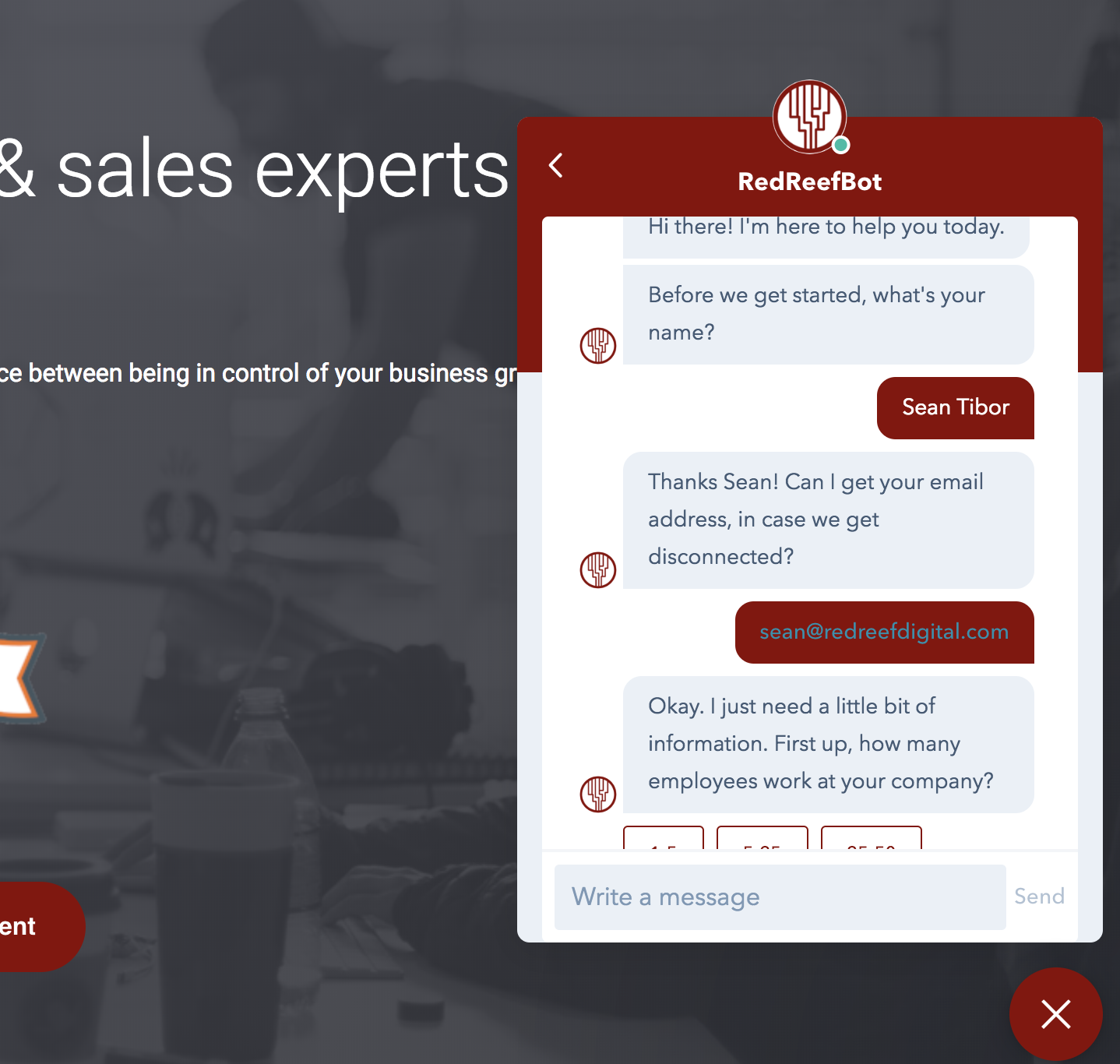What's the value of a customer to your business? The Lifetime Value of a customer, often referred to as LTV or CLV, is the measure of a customer's worth to your business in hard dollars. This is the most critical piece of data for marketers to use to answer the big "So What?" question about ROI and marketing investment. If you're a CEO, you should expect your marketing team to use LTV to inform their assumptions and drive their decisions.
This post will help you:
- Understand how to calculate your LTV
- Segment your customers by LTV
- Use Excel to calculate your customer LTV
The Relationship Between Cost per Acquistion (CPA) and LTV
Let's look at two different LTV scenarios between marketing leaders and the rest of the executive team:
Marketing: "Our CPA is $3500."
Executive: "So what?" (or "What?? That seems high!")
Scenario 1:
Marketing: "The average value of those customers is only $4,000. We're spending too much on marketing and sales."
Scenario 2:
Marketing: "Our customers spend an average of $80,000 with us. This is a fantastic ROI!"
Which conversation would you rather have?
First things first: What is the LTV metric?
Most marketers have a variety of metrics at their fingertips, like Cost per Lead (CPL), Cost per Acquisition (CPA), visitor to lead and lead to customer conversion rates, but if you don't know what a customer is worth, you'll have no way of knowing if your marketing is actually working.
There are a few different formulas that work well for LTV and we'll walk through a few of them here.
Simple LTV Calculation
LTV = average revenue per time period * average customer lifespan
Equation Inputs:
average revenue per time period: total revenue in a given time period / number of customers
average customer lifespan: 1 / (1 - customer retention rate) or your own internal estimation
customer retention rate: The percentage of customers that repurchase over a given time period, compared to the previous time period
This calculation is focused only on revenue and doesn't take margin into account. This is probably the easiest way to calculate LTV, especially if you don't have any repeat purchases. You only need to know the average revenue for each customer in a given time period, as well as the average number of time periods that they remain a customer.
For example, if your average sales price is $10 and your customer only buys from you once, then the LTV is $10. If your average revenue per year is $10 and the customer stays for 2.3 years on average, then your LTV is $23.
Repeat purchases are almost always a possibility, especially if you think of your customer (the actual buyer) separately from your consumer (the user). For example, in labor and delivery at hospitals, a baby is only born once (consumer) but the parents (customer) could come there for multiple children.
Traditional LTV Calculation
The traditional LTV calculation is more complicated but only requires a little more information. This method takes your gross margin into account, which can be more helpful when determining marketing and sales ROI.
LTV = average gross margin per customer lifespan * ( customer retention rate / ( 1 + rate of discount - customer retention rate )
Equation Inputs
average gross margin per customer lifespan: gross margin (%) * average total revenue per customer
customer retention rate: The percentage of customers that repurchase over a given time period, compared to the previous time period
rate of discount: a standard forward-looking discount rate, usually between 8% - 15%
Example:
For an average $2000 gross margin with a retention rate of 20% and discount rate of 10%:
$2000 * (0.2 / (1 + 0.1 - 0.2) = $444
Alternate Margin-based LTV Calculation
This alternate LTV calculation is simpler to calculate and incorporates gross margin. This can be useful if you don't have as much data or history about your customer purchase behavior.
LTV = average purchase price * average number of purchases * % gross margin
Equation Inputs:
average purchase price: total revenue in given time period / total number of purchases
average number of purchases: total number of purchases / unique customers in given time period
% gross margin: total production cost / total revenue
This
Step 1: Getting Started
First, you need to gather the data below for the time period you're measuring. Most of these figures will come from your accounting or sales systems. A system like HubSpot CRM will allow you to gather most of these metrics in one place.
Input Measures
- Total Revenue - sum of all purchases and orders in the year
- Unique Customers - the number of distinct customers that made purchases in the given year
- Returning Customers - the number of customers making purchases in the given year that made purchases in the prior year
- Year Ago Customers - total number of customers from the prior year
- Gross Margin - the calculated gross margin on all products and services sold
- Number of Purchases - the total number of purchases made in the given year
- Rate of Discount - your standard corporate discount rate. If none is available, use 10% as a starting point
Derived Measures
- Average Purchase Price: Total Revenue / Number of Purchases
- Average Purchase Frequency: Number of Purchases / Unique Customers
- Customer Retention Rate: Returning Customers / Year Ago Customers
- Average Revenue Per Customer: Total Revenue / Unique Customers
To help you capture these numbers, we've created a LTV spreadsheet that will help you track and calculate all three LTV equations.
Step 2: Run the Numbers
Once you've totaled up all of the revenues, costs and determined the number of customers, you can use the formula above and the Excel worksheet to calculate your LTV. The hardest part is gathering the information: the calculation itself is simple.
Step 3: Interpreting the Results
Now that you have your LTV calculated, you can compare it your cost of customer acquisition to determine if your marketing and sales efforts are profitable. Furthermore, most businesses find it very helpful to segment their customers into groups by common characteristics and determine if some types of customers are more valuable than others.
If you find it hard to determine which LTV equation works best for your business, you can try averaging the three results together to get an approximate mean LTV.
If your Lifetime Value is higher than your Cost of Acqusition:
This should be a very profitable situation for your business, especially if you are using the LTV equations that incorporate gross margin. Depending on your industry, the cost of acquisition can be anywhere from 3% - 30% of revenue, or even up to 50% of gross margin. You may be surprised to see a customer lifetime value that is much higher than your average sale price due to high customer retention and repeat purchases. In industries where the lifetime value is high and customer retention is highly profitable, the corresponding cost of acquisition will also tend to be much higher than the initial purchase price.
If you find that your cost of acquisition is a small fraction of your gross margin (<10%), then you may not be spending enough on marketing and sales. This could indicate that you have an opportunity to grow faster with smart marketing and sales investments.
If your Lifetime Value is nearly equal to or greater than your Cost of Acquisition:
This is dangerous territory, as you are spending as much to acquire your customers as you receive from them. There are strategic reasons to do this, such as when trying to capture market share or gain new customers in order to build the intrinsic value of your product.
In most cases, a high cost of acquisition is a major warning flag and should cause you to reevaluate your marketing and sales strategies. This is often caused by marketing and sales organizations that are underperforming or have outdated strategies and processes.
Step 4: Next Steps
Now that you have your LTV calculated, plan to reevaluate it on an annual or quarterly basis. This measure does not change quickly over time, and should be calculated less frequently to smooth out any short term variations or trends.
If you are looking to increase LTV for your company, focus your efforts in these areas:
Increase Average Purchase Price
It's not just about increasing the cost of your products and services. You can also try to bundle complementary products and services together to create more value, introduce new products with better margin, and shift your marketing and sales efforts towards your higher margin products.
Increase Customer Purchase Frequency
Introducing new products and services is a great way to get customers to purchase from you again, especially if they are satisfied with their previous purchase. For example, adding a dashboard package to an existing IT consulting project can cause existing customers to purchase again
Improve Customer Retention
A great customer experience is the shortest path to better customer retention. When customers are delighted by the experience of working with you and using your products, they are more likely to stay and purchase from you again. This has a direct impact on your LTV and increases your overall profitability without having to expend more in marketing and sales.
Segment Customers By LTV
Finally, one of the best ways to increase your overall LTV is to identify those customers that already have a high lifetime value by looking at common characteristics. For example, customers in the banking industry may have a higher LTV than customers in the construction industry. When you know where your more valuable customers are coming from, you can focus your marketing and sales efforts to attract, convert, and close more of them and focus less attention on low-value customers.
We recommend starting by analyzing your top customers for retention and lifetime sales to identify common characteristics. This will help you avoid assumptions based on demographics and firmographics. For example, you could segment based on job title and miss a key geographic dimension in your segments.
Other Related Marketing Metrics
- Cost Per Acquistion - The cost of acquiring new customers across both marketing and sales.
- Marketing CPA - just the marketing costs per new customer
- Sales CPA - just the sales costs per new customer
- Marketing % of CPA - Marketing CPA / Total CPA. This will help you track if you are spending more and more on marketing and identify if additional sales efforts and investment are required
- Marketing and Sales % of LTV - (Marketing Costs + Sales Costs) / Customer Lifetime Value. This is a great way to make sure that you are not spending too much to acquire each new customer and becoming unprofitable. A general rule of thumb for marketing is that your costs should not exceed 10% of your customer revenue. Remember, you still have the costs of servicing that customer or manufacturing the products for them.
CONCLUSION:
The customer lifetime value is a key metric for understanding the right amount of marketing and sales investment to make in your business. When you pair this metric with your cost of acquisition, you can ensure that you are growing your business profitably and for the right reasons. Once you understand your overall customer lifetime value, you can then segment your customer base and identify the most valuable customers to pursue with your marketing and sales efforts.
Was this helpful? For more marketing metrics that matter to your business, download my free guide here:

Measure What Matters. Data Makes The Difference.
Free Guide: The 6 Marketing Metrics You Should Actually Care About
Don't get distracted by social shares, clicks, impressions, influencer scores, or other low-level metrics. This guide to the 6 Marketing Metrics You Should Actually Care About will show you how to measure what really matters for your business success.




